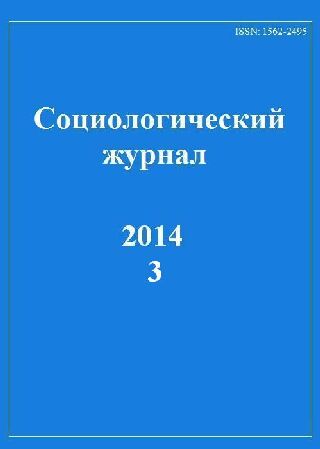Феномен женской бездетности в России: исторические и социальные предпосылки
Аннотация
Литература
Вишневский А.Г. Модернизация рождаемости // Демографическая модернизация России 1900–2000. М.: Новое издательство, 2006. С. 149–257.
Вишневский А.Г., Кон И.С. Брачность, рождаемость, семья за три века. М.: Статистика, 1979. — 183 с.
Вишневский А. Г. Перепись населения: взгляд демографа // Экономика России: ХХI век. 2002. № 9 [электронный ресурс]. Дата обращения:11.01.2013. URL:
Вишневский А.Г. Семья эволюирует // Иностранная литература. 2011. № 5. С. 20–32.
Вишневский А.Г. Ранние этапы становления нового типа рождаемости в России // Брачность, рождаемость, смертность в России и в СССР / Под ред. А.Г. Вишневского. М.: Статистика, 1977. С. 105–127.
Дарский Л.Е. Демографический энциклопедический словарь / Гл. ред. Д.И. Валентей. М.: Советская энциклопедия, 1985. — 608 с.
Дарский Л.Е. Формирование семьи. М.: Статистика, 1972. — 208 с.
Диксон Р. Колебания возраста вступления в брак и доли никогда не со-стоявших в браке в странах разных культур // Брак и семья / Под ред. А.Г. Волкова, Л.Е. Дарского. М.: Статистика, 1975. С. 30–47.
Захаров С.В. Рождаемость в России: первый и второй демографический переход // Демографическая модернизация, частная жизнь и идентич-ность в России. Тезисы докладов. Научная конференция. Москва, 27–28 февраля 2002 г. М.: ЦДЭЧ ИНП РАН, Институт этнологии и антрополо-гии РАН, 2002. С. 19–26.
Ильина И.П. Влияние войн на брачность советских женщин // Брач-ность, рождаемость, смертность в России и в СССР / Под ред. А.Г. Вишневского. М.: Статистика, 1977. С. 50–61.
Миронов Б.Н. Демографические процессы и начало демографичсекого перехода // Социальная история России. Т. 1. СПб.: Дмитрий Буланин, 2000. С. 158–209.
Миронов Б.Н. Традиционное демографическое поведение крестьян в XIX — начале XX в. // Брачность, рождаемость, смертность в России и в СССР / Под ред. А.Г. Вишневского. М.: Статистика, 1977. С. 83–104.
Сифман Р.И. Динамика рождаемости в СССР (по материалам выбороч-ных обследований). М.: Статистика. 1974. — 183 c.
Тольц М. Брачность населения России в конце 19 – начале 20 века // Брачность, рождаемость, смертность в России и в СССР / Под ред. А.Г. Вишневского. М.: Статистика, 1977. С. 138–153.
Урланис Б.Ц. Динамика уровня рождаемости в СССР за годы советской власти // Брачность, рождаемость, смертность в России и в СССР / Под ред. А.Г. Вишневского. М.: Статистика, 1977. С. 8–28.
Хаджнал Дж. Европейский тип брачности в ретроспективе // Брачность, рождаемость, семья за три века / Под ред. А.Г. Вишневского и И.С. Кона. М.: Статистика, 1979. С. 14–66.
Morgan S. Late nineteenth- and early twentieth century childlessness // American Journal of Sociology. 1991. No. 97. P. 779–807.
Rowland D.T. Historical trends in childlessness // Journal of Family Issues. October 2007. Vol. 28. P. 1311–1337.
Все права на статью принадлежат авторам. Авторы передают права на использование статьи, в том числе на использование статьи в открытом доступе, издателю журнала на условиях неисключительной лицензии (Авторское соглашение (публичная оферта))
Принятием условий этого договора автором считается передача им материалов в редакцию через официальный сайт журнала ("Отправить рукопись") или через электронную почту редакции.











